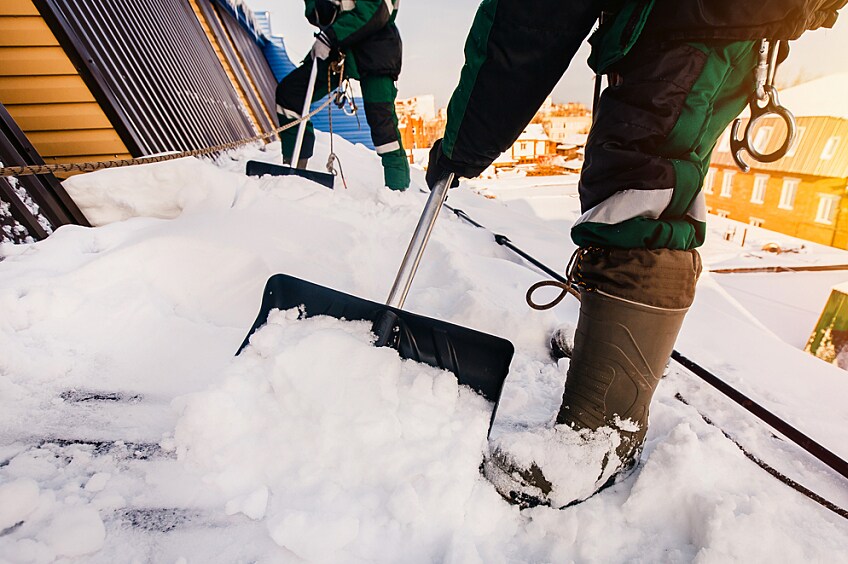As the year transitions into the fall and winter seasons, keeping your employees busy and engaged can help to maintain solid teams year-round. High turnover can be common in the roofing industry, leaving teams at risk of becoming short-staffed. However, with winter employment strategies to keep your people engaged and drive them to succeed, you can help them reach their potential and show them that you're invested in their careers.
The changing seasons also give you the chance to grow your business and stay productive. Rather than scaling back operations, roofing professionals can make the most of this time by staying on top of training, marketing, and workplace improvements. Here are some tips for keeping your employees motivated and taking advantage of off-season time to boost your business.
Provide the Right Tools, Training, and Resources
Business out in the field may slow down when the weather gets chilly, but it's the perfect time to prioritize professional development and educational programs for your crew and project managers.
The GAF CARE learning portal offers hundreds of hours of training sessions, strategies, and tips designed to benefit roofing contractors. From installation fundamentals to marketing tips to incorporating the latest technology into your business, there's a webinar taught by a roofing industry expert that can help you meet your goals.
More than 230,000 professionals across North America and Mexico have taken CARE courses. A complete list of upcoming webinars and educational opportunities can be found on the GAF CARE events calendar. You can also watch past recorded sessions on the GAF Learning Portal.
Find Other Ways to Put Your Team to Work
Even during colder months, roofing contractors can stay busy by performing roof inspections, resolving ice dams, repairing hail damage, or raking and sweeping flat roofs. It's important to tell your customers not to clear snow off their roofs themselves—it can be dangerous, and their shovels may damage shingles or void their roof warranty.
Consider using this time to encourage your team to study new roofing trends. Roofers can participate in virtual or in-person industry trade shows or webinars and then focus on incorporating this research into new business practices.
Lay the foundation for customers' spring roofing systems by continuing to serve your clients in any way they need, helping you stay visible in the community.
Reach Out to Past and Current Clients
Stay top of mind with customers. If your roofing business operates during the winter months, make a list of homeowners you've worked with recently and a few years ago, and contact them to let them know they can count on you year-round. Staying in touch shows them you care about their home, plus being their emergency roofer can boost business during off-season months, keeping your team busy.
Use this opportunity to ask your clients for referrals in the neighborhood so you can beef up your list of leads for the spring. Word of mouth is often the best way to promote your business. And don't forget to suggest a roof inspection to customers whose projects were done several years ago. Offer to book them early so that they can get quick service once the snow melts.
Get Your Team's Help with Your Marketing Strategy
Encourage employees to get involved in helping your business grow during downtime. For example, they might create remote roof measurements, which can be used to develop personalized marketing campaigns that bring customers in.
Or, your team's winter employment may include working on educational materials or tip sheets for homeowners, such as teaching them about how to prevent roof damage from snow, ice, and storms. Keep staff engaged by asking them to compile useful statistics and information into online ads, your website, or a helpful brochure that can be dropped off in people's mailboxes. If you own a drone, your employees can take photos of homeowners' roofs and share them to illustrate any damage. Then, your team can follow up in the spring to book the work.
Set Your Goals for the Coming Year
The off-season is a great time to evaluate your company's past performance and seek out ways to improve. Whether the team's goal is to boost revenue, branch out into new communities, or adopt new technology into your business, your company can grow over the coming months when you identify these opportunities.
Gather input from both your field and office teams to find new ways of succeeding no matter the time of year; giving employees a role in decision-making strengthens their loyalty and engagement. By the time the spring roofing season is in full swing, the fruits of the team's winter efforts can help your company get ahead of the competition.
Consult GAF CARE training and contractor resources to arm yourself for success. You can find additional business building resources at gaf.com/getthere.

